Swedish Design Principles
Swedish & Nordic designs are popular in homes around the world, and it is easily recognizable. Today, I will focus on interior design and furniture. I will try to take you through a modern Swedish home room-by-room. I will also take a look at IKEA, the store that more than any other has spread the Swedish design ideal around the world. But before we start that tour let’s look at some general principles.
The main elements of all designs are functionality/simplicity/craftmanship. You will find muted colors with lots of white, grey, and tan, with accents of more bold colors. The colors often draw inspiration from the Swedish landscape.
You will also find lots of natural lighting often in combination with white walls and minimal window treatments to make the space feels bigger and brighter. You will find a lot of natural materials both in furniture and textiles, as well as in accent pieces and decor. And this connection to nature continues with greeneries both in form of plants and flowers and textile patterns. The Swedish home is an example of a minimalistic aesthetic with decluttered spaces and an understated design with clean lines where the function is just as important as form. Simplicity and practicality go hand in hand and it is not unusual for furniture to have multifunction. Less is more is really important in a modern Swedish home.
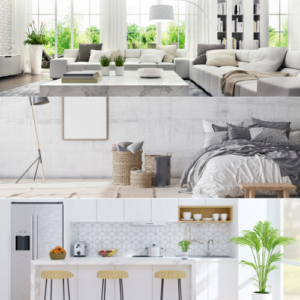
Colors in Swedish Design
Swedish interiors and furniture designs feature white, off-white, and gray hues along with muted blue and green colors. Darker accents can also create bold color contrasts. Other hues include beige and cream hues as well as muted brown colors, as these interiors generally feature an abundance of wood flooring and wood furniture.
Furniture Style
Swedish-style furniture is minimalist and practical. Designers often use only solid wood to craft chairs, tables, and other furniture. Natural materials like leather, linen, and textiles complement wood surfaces. Function plays a crucial part in all Swedish furniture design. Think hidden storage, modular shelving, or flexible designs. So with that in mind let’s take a look at some rooms in a modern Swedish home, and how they all can be re-created in your home by taking a closer look at some of the rooms in a home, and how you could create your own Swedish style in the different rooms.
Room-by-Room
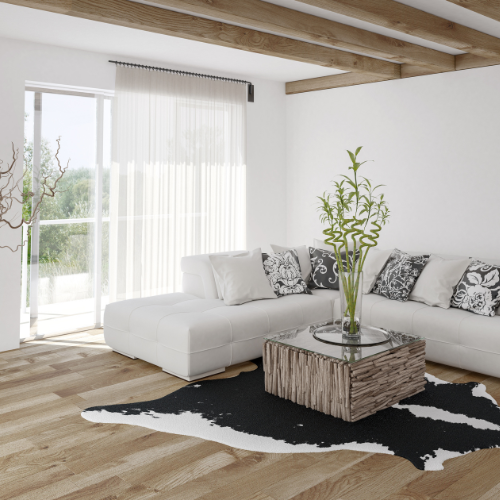

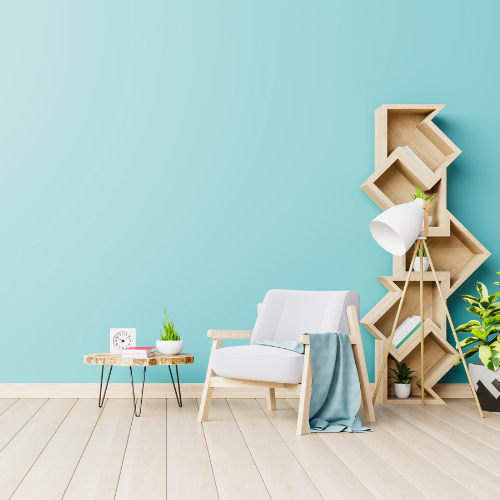
Livingroom
A modern Swedish living room typically has wooden flooring and white or very light walls. Often with large windows with minimal window treatments to let as much natural light in as possible. You often see plush, textured rugs, in natural colors. Before we talk about furniture let’s talk about the general feel you want to accomplish The room should feel clean and functional, bright and airy. To accomplish this let’s start with looking at what sofa you should use.
This should be rather slim, with straight lines, but still offer comfort. The materials are often natural like linen or even leather, often with, tapered legs made of wood. You very often see big, throw pillows and maybe even a wool throw blanket, on the couch, often in muted colors.
In a modern living room, you will see added seating in the form of chairs in light colors with curved backs and tapered, wooden legs. It is not unusual to see a mix of mid-century furniture with more modern styles. Add a side table and some shelving. Stay within the light color palette. Use some greenery spread out through the space, and some decorative wood items. Put some accent colors around the space in form of textiles and wall art and finalize the look with some lighting, and now you have created a modern Swedish living room.
Bedroom


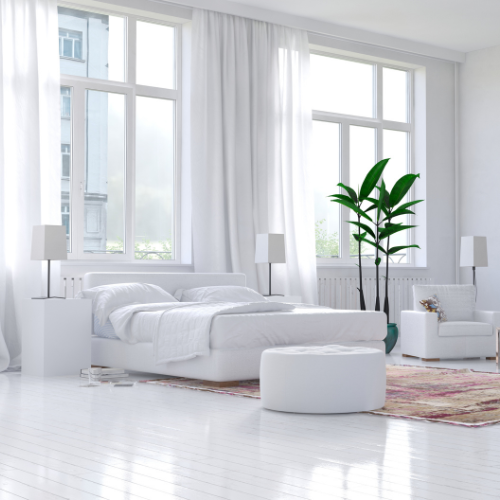
A Swedish bedroom should take advantage of the relaxing, cozy aspects of this decor style. By using soothing, natural tones, adding light, modern furniture, and following a minimalist approach, you can create a serene bedroom space. Natural textiles, warm throws, wooden flooring, and a plush rug are parts of the decor.
Investing in a low-profile platform bed with an upholstered frame can set the tone for the room. Choose white or grey bedding, avoid bold colors and patterns, and top your duvet with a cozy throw. Add a floor lamp for additional lighting. If you’d like to add artwork, choose a monochrome piece. Black-and-white photography or ink drawings. Transform your bed with a fluffy duvet, plush pillows, and natural textiles. Choose a simple nightstand for a minimalist lamp. Also in the bedroom, you will find wooden flooring often with a plush rug. Add a plant or two to bring a bit of nature to your retreat. Keep things simple and clear, but add some decorative accents.
Kitchen
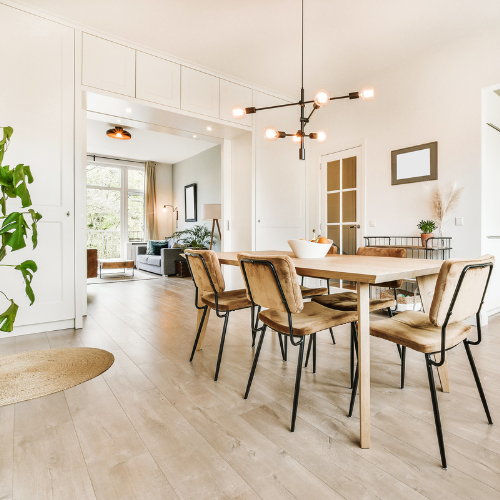

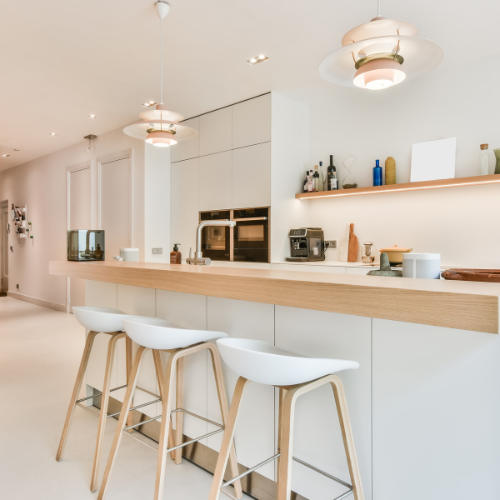
A Swedish kitchen is a comfortable, functional, and sleek area to prepare meals. To emphasize the decluttered, minimalist aesthetic, keep countertops and shelving free from unnecessary wares and appliances. Except for a few adornments such as a wooden bowl with fruit or a vase with greenery, the kitchen should remain light on decor.
The kitchen should boast light hues, wooden surfaces, clean lines, and practical features. Opt for herringbone or light wood floors. Add wooden accents throughout bar chairs and kitchenware. Paint cabinets in white or grey. Choose backsplashes with geometric motifs to introduce new patterns and textures.
Dining
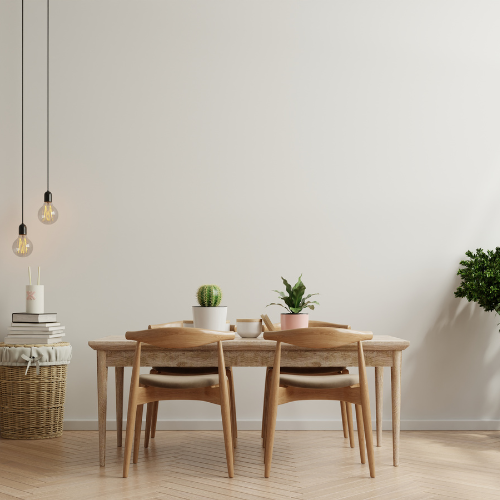
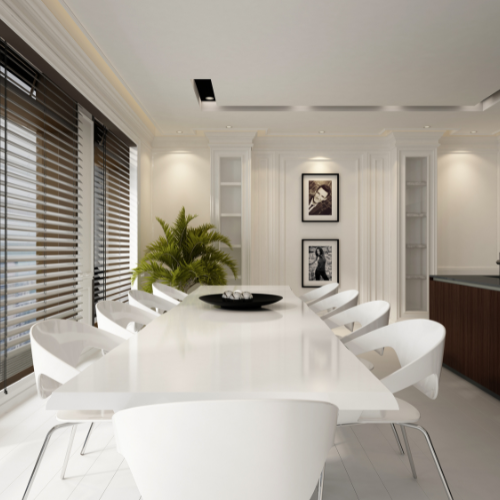

A modern Swedish dining room should reinforce the simple, clean theme. Create a space that feels open and sophisticated, yet casual enough to dine comfortably. Pendant lighting perfectly complements the aesthetic. These bold yet simple fixtures create a bright, localized light source that works well above a wooden table. Top your table and surrounding area with potted plants and flowers. Swedish decor often bears high contrasts, so don’t be afraid to go all-in on an all-white dining room and a blue or black sculptural centerpiece for a more dramatic approach. A spacious wooden dining table, most often in a light wood like beech, ash, and pine, with comfortable dining chairs. Also here use wooden flooring.
Bathroom
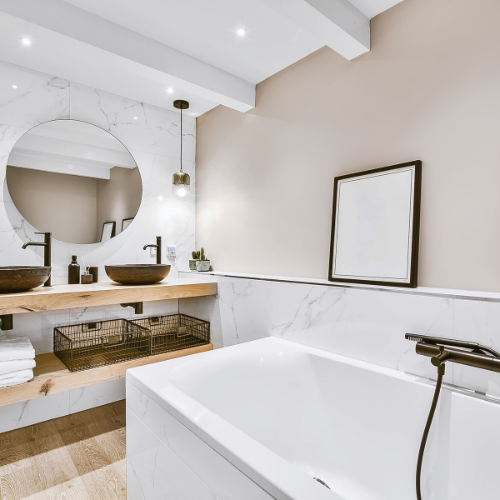
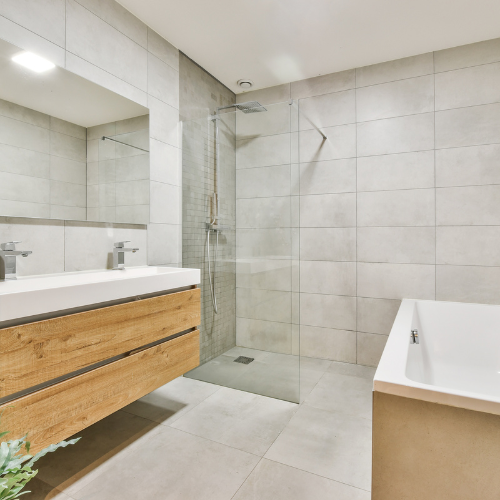
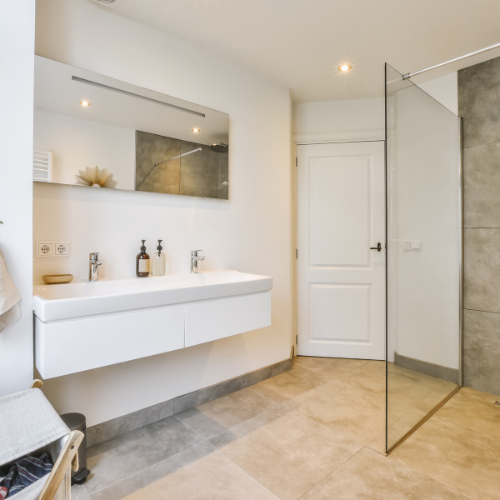
A Swedish bathroom design focuses on simplicity and function. White walls and/or white tiles appear alongside wooden cabinets or light furniture with wooden accents. Plant pots, open shelving systems, and minimalist wall sconces are also usually found in Swedish bathrooms.
Outdoor Spaces
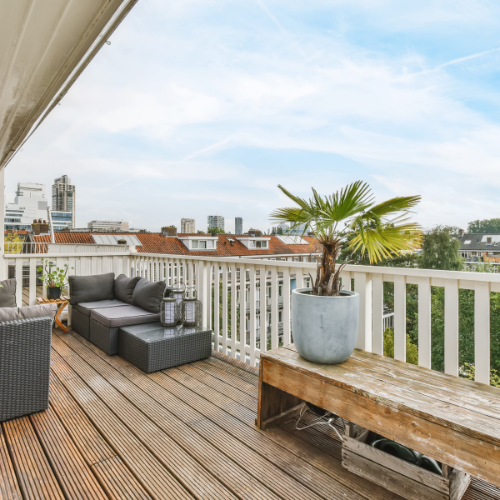

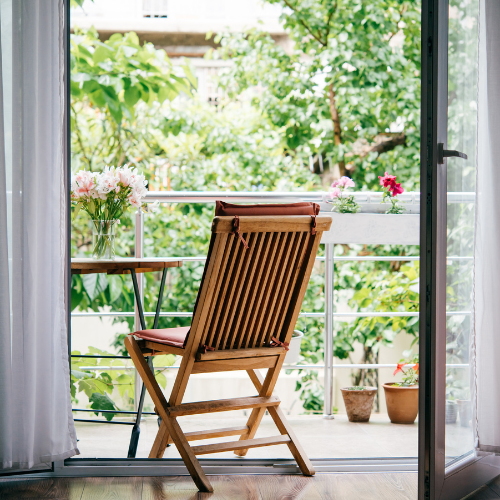
Decorate your outdoors through bright, natural lighting and lush greenery, so your backyard is the ideal space to embrace the style. Patios both big and small can adopt Scandinavian characteristics to transform the space into a minimalist haven.
For smaller patio spaces, look for an intimate wooden table and chair set. Add potted succulents or other low-maintenance greenery atop your table.
For those with more space, look to all seven of the principles of Swedish design to bring your outdoor space to life. Utilize types of wood, incorporating the material into side tables, decks, and other elements. Find modern outdoor furniture with white or grey cushions, and a bright outdoor rug to anchor your seating area.
IKEA

Now that we have some insight into Swedish design and interior style we must talk about the one store that more than any other has helped to spread the interest of this around the world, IKEA. So let’s take a quick look at the history of IKEA and how it has spread the interest in Swedish design. All of this is the brainchild of the late Ingvar Kamprad, a Swedish businessman who came up with the idea for a store full of functional furniture that’s easy to put together.
Kamprad was born in 1926 on a farm in rural Sweden. Kamprad started IKEA in 1943. He was 17 years old. The first IKEA sold small household goods like pens, wallets, and frames for pictures. As for how Kamprad came up with the name IKEA – it’s his initials Ingvar Kamprad followed by E for Elmtaryd, the family farm he grew up on, and Agunnaryd, his home village. In 1947, he started selling furniture made by local manufacturers. Kamprad made the mail order catalog an essential part of IKEA’s business from the start.
Ingvar launched the iconic IKEA catalog in 1951. The prices were so low that people were skeptical about the quality of the furniture, so Kamprad rented an old workshop into a showroom to display his furniture. A few years later, Kamprad solved the problem of the expense of shipping large furniture when he took the legs of a coffee table so it could be packed flat. From that point on, as many products as possible were packed in this manner. It saved customers and IKEA money to pack items this way.
By 1955, Kamprad’s manufacturers began boycotting IKEA due to its low prices. Kamprad solved this by bringing production and design in-house. His concept was complete. He designed, produced, showcased, flat-packed, and sold his own furniture all in-house. Kamprad believed that everyone should be able to afford stylish, modern furniture. That is the driving idea behind IKEA.
The first stores outside of Sweden were opened in Norway in 1963 and Denmark in 1969. Over the next decade, IKEAs were popping up worldwide in countries like Japan, Australia, and Canada, where crowds lined up for grand openings. Today there are 433 IKEA stores in 38 countries.
As for those weird product names—there’s a system to them. Beds have names of places in Norway. Sofas are named after towns in Sweden. Kitchen tables take their names from geography in Finland. Rugs have mostly Danish names. Chairs are mostly named after men. Glasses and cups have adjectives as names. Names are the same across the globe, like the infamous Billy bookcase.
The Scandinavian heritage is still at the heart of IKEA’s design, seen through its minimalistic and simple composition. Being resilient and multi-functional as well as simple and straightforward are obvious characteristics of truly Scandinavian design.
So the question is can we create the Swedish style using IKEA? Most definitely, yes. You will find that with some time and patience, and an Allen wrench at hand, you can create the feel of Swedish design in any home without breaking the bank. And if you do a quick search on social media using the term Swedish design from IKEA you will find lots of interesting websites about specific items that can help you create the feel. And a stroll on IKEA’s website will definitely give you inspiration.
In my next episode, I will return to the topic of famous Swedes, I did an episode about Swedes in Hollywood in season 2, and this time I will take a look at Swedes in the music business.
Until next time
As we say in Sweden
Hej Då
